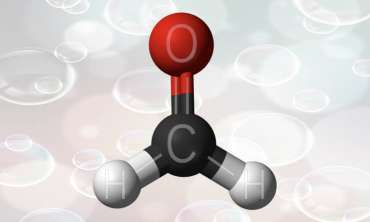Nucleophile
React and convert formaldehyde into stable, non-toxic compounds at notable speed
Formaldehyde, chemical formula is HCHO, is a naturally occurring organic compound, is a colorless, odorless, irritating air pollution poison. The volatilization period ranges from three to fifteen years.

The main component of clear aldehyde smell is a mild nucleophile. The reagent breaks the unsaturated work by attacking the carbon atom with partial positive charge in the carbon-oxygen double cone, and at the same time forms a negative ion intermediate and then the neutralizing agent in the reagent.

Whether the concentration of formaldehyde is high or low, it will affect or damage the human body, and the consequences of long-term exposure to high concentrations of formaldehyde can cause cancer.

Eliminate
Preferred Formaldehyde Removal Products
Eliminate
Passed by various test
Gentle and non-irritating to the human body
Developed by Sundial Technology Development Limited, TSSSU awardee and HKSTP-incubated company Sundial Technology Development Limited. This product is certified by CMA Testing and Certification Laboratories to be effective to reduce Formaldehyde emission rate by 99.4% within 30 minutes.
Eliminate
Where is formaldehyde hiding?
The chance of exposure to formaldehyde in daily life is quite high, because formaldehyde mainly comes from paint, glue, fiberboard, plywood, sound insulation board, styrofoam and other building materials, these materials often appear and are used in the process of decoration projects and furniture production , as the raw material.
There are laws in Hong Kong that prohibit the addition of formaldehyde in food, but there is no rigid regulation on the formaldehyde content of decoration materials and furniture, so the formaldehyde concentration in the home or office after decoration will generally exceed the standard!
As many as three thousand different building materials emit formaldehyde. Relevant building materials mainly include paint, fiberboard, plywood, sound insulation board, styrofoam and fabric supplies. And frequently used floor glue, plastic veneer, latex paint, adhesives, etc. all contain formaldehyde.
Furniture is generally made of different wood, artificial leather and other materials. During the production process, these materials will be processed by chemicals containing formaldehyde, such as paint and protective paint, etc., resulting in various types of furniture products containing a certain concentration of formaldehyde and releasing formaldehyde into the air during use.
Adhesives (commonly known as: glue) produce formaldehyde. Formaldehyde is an important part of adhesives, so everything that involves adhesives, including wood-based panels, road materials, carpets, and furniture will contain formaldehyde. If a single item exceeds the standard, it will inevitably lead to substandard air quality.



